C.L.R. Peterson's Blog
January 17, 2024
The Mystery of Two Duchesses and their Duke
Greetings, Reader!
Why would you want to read about Duke Alfonso II, who ruled Ferrara during the Italian Renaissance, and his first two duchesses?
Why do 21st-century authors keep writing novels about these 16th-century Italians (who are unknown to 99% of people alive today)?
Spoiler clue: It’s the mystery that appeals to authors and readers—
Was 16-year-old Duchess Lucrezia murdered by her husband, poisoned on his orders,did she die of “putrid fever,”or did something else happen?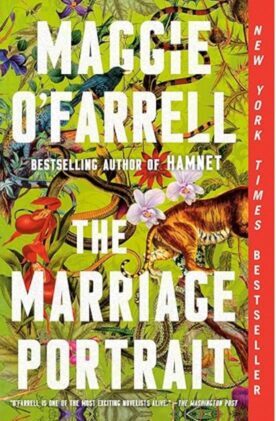
When I picked up The Marriage Portrait, Maggie O’Farrell’s recent novel set in Renaissance Italy, about Lucrezia de’ Medici (the third daughter of Grand Duke Cosimo de’Medici of Tuscany and first wife of Alfonso d’Este, Duke of Ferrara), I wondered:
How would this new novel compare to The Second Duchess, by Elizabeth Loupas, about Alfonso’s second wife, Barbara of Austria, (which I read when it came out in 2011)?
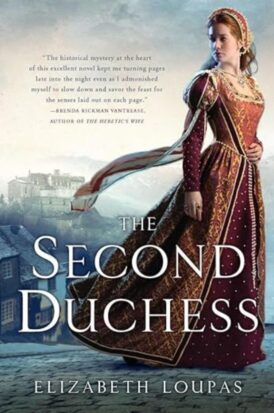
Although the two novels portray Lucrezia de’ Medici and her fate in very different ways, they share several elements:
Both novels engaged and entertained me, with strong plots and portrayals of their cultural settingsProtagonists (1st and 2nd duchesses) are pawns in the marriage checkerboard of ruling families—relatively young women sent to marry a man they’ve barely met in order to enhance their family’s standing.Both women face danger when they marry the duke and move to Ferrara because of:Their position as outsiders in the court at FerraraThe duke’s unrestrained power over the people and places he rules, combined with his volatile temperBoth duchesses take agency as they can—they don’t passively do their husband’s biddingBoth novels revolve around the question of how the 1st duchess, Lucrezia de’ Medici, died at the age of 16 after little more than 1 year of married life in FerraraNow, on to focus on The Marriage Portrait:Characters:
Lucrezia – protagonist, third daughter of Grand Duke Cosimo de’ Medici of Tuscany, portrayed as a brilliant, lonely misfit whose major way of expressing herself is by creating artEmilia – Lucrezia’s loyal personal servant who goes with her from Florence to Ferrara when Lucrezia marriesAlfonso d’Este, Duke of Ferrara – mercurial husband of LucreziaLeonello Baldassare – Alfonso’s cousin and best friend, he shows instant dislike for LucreziaElisabetta – Alfonso’s beautiful sister, friendly to LucreziaNunciata – Alfonso’s less attractive sister, suspicious and unfriendly to LucreziaJacopo – artist’s apprentice, bonds with Lucrezia due to their shared dialect (of Naples) and love of paintingStrengths:
Great character development and build-up of suspenseStrong plot and portrayal of cultural settingRemarkable ending in which the author pulls together all the clues she has planted throughout the novelWeakness:
Although the author mentions locations and dates at the beginning of each scene, alternating time periods between chapters may be confusing
Content review:
Marital sexual relations are mentioned, primarily to highlight both the era’s pressure for distinguished families to produce male heirs, and the wives’ lack of agency in this areaDepictions of violence common in this eraI recommend The Marriage Portrait to readers who enjoy novels with strong characters, surprising plots, long-ago settings, and plenty of suspense.
Reader, what are your favorite historical novels that include an element of mystery?
The post The Mystery of Two Duchesses and their Duke appeared first on C.L.R. Peterson, Author.
December 9, 2023
My Holiday Gift for You
Wherever you are, whatever your circumstances, I wish hope and peace for you in our troubled world.

Instead of a book review, this month, I’m offering you, loyal reader, my new short story, “Caterina’s Choice.” (Clicking the link will take you to StoryOrigin, where you can download my story to your chosen device.) The story isn’t holiday-themed; rather, it’s a short prequel to my debut novel, Lucia’s Renaissance, and I’d love to hear your thoughts about it.
All the best to you and those you love!
Arrivederci/ until next time,
Colleen
The post My Holiday Gift for You appeared first on C.L.R. Peterson, Author.
November 8, 2023
A Surprising Era in Salerno: Book Review of Rebecca of Salerno
Women in the United States only began to practice medicine in the 1800s (see my review of The Physician’s Daughter), so how could a young Jewish woman become a physician back in 1195?
Author Esther Erman answers this question in her action-packed recent novel, Rebecca of Salerno.
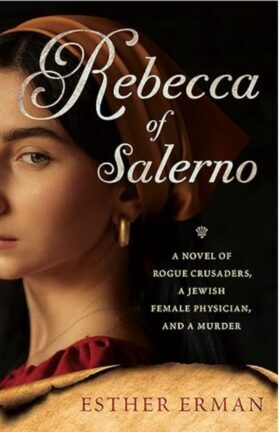
In these days of conflicts related to ethnicity and religion, it’s a relief to escape into a novel set in late twelfth-century Salerno, Italy, where Rebecca could attend medical school and become a physician.
Remarkably, Salerno had a reputation as peaceful, prosperous, and tolerant of diverse groups, as exemplified by the medical school founded in the eighth century by a Greek, a Latin, a Jew, and a Muslim.
But Salerno’s atmosphere had changed by the time Rebecca, our protagonist, disembarked there. Why?
Crusaders arrived, en route to and from their destination in the East. They set up camp outside the town and committed acts of vandalism, robbery, and rape—with impunityThe Hohenstaufens, a German dynasty, conquered the Normans and took Salerno in 1195, installing a relative, Duke Henry, as ruler of the city. He didn’t want to offend the pope or the king’s regent, William of Capparone, by cracking down on the crusaders’ misdeeds.The conflicts Rebecca faces animate this story:Her father and extended family pressure her to assume the traditional role of Jewish women–marriage and life as a wife and mother—but Rebecca aspires to an independent lifeHer colleague, Rafael, repeatedly proposes to Rebecca, but her trauma after losing her first love, Ivanhoe, leads to her secret vow not to marryEven in Salerno, Rebecca faces discrimination based on her gender and religionCharacters:Rebecca – protagonist, a young Jewish woman who has always wanted to devote her life to healingRafael Lopes Dias – young widower who attended Salerno’s medical school; he prefers translating texts into Hebrew rather than practicing medicineIsaac ben Shmuel – renegade Egyptian rabbi who alienates nearly everyone he meets; he’s blamed for murdering a crusaderRebecca’s father – traditional Jewish father who wants his daughter to marry and have childrenLaura di Petrocelli – Rebecca’s medical student; her life exemplifies the challenges faced even by a Christian female native of Salerno who pursues a medical careerLeah Sara Garcia – from an older generation than Rebecca; she completed her studies at Salerno’s medical school, but went on to a traditional Jewish life as mother of many childrenBaruch Mendoza – patriarch of a prominent Jewish family in Salerno; he plays a key role in the storyStrengths:Engaging plotDistinct, interesting charactersOffers readers a window on a place and era unfamiliar to manyWeakness:This is an inspiring story, but Rebecca’s good fortunes may not strike all readers as credible.
Content review:References to sexual violence in the later part of the story may disturb some readers.
My recommendation:If you enjoy journeying with a bold heroine to discover a distant, unfamiliar time and place, and at the same time solving a murder case, Rebecca of Salerno will provide an enjoyable and educational reading experience.
Reader, have you read a novel about this era that you’ve enjoyed?
The post A Surprising Era in Salerno: Book Review of Rebecca of Salerno appeared first on C.L.R. Peterson, Author.
October 8, 2023
When Exceptional Art Meets Everyday People
Have you ever encountered art, literature, or music that impacted you in a way you can’t forget?
This month, we discuss a historical novel about a painting that altered several lives, and a work of history in which opera changed two ordinary lives, which in turn saved numerous lives.
But first: join me and three other historical novelists on October 17th on Zoom for “Women Breaking the Rules: Heroines in Historical Fiction.” To join us for the discussion, sign up (no charge) at:
Women Breaking the Rules: Heroines in Historical FictionNow to the reviews:
 How can a novel about a painting keep you turning the pages?
How can a novel about a painting keep you turning the pages?Susan Vreeland, author of Girl in Hyacinth Blue, pulls this off with 8 chapters that work on their own as short stories, but leave readers wanting more.
With its focus on a Dutch painting, this novel (published in 1999) explores the artwork’s origins, the paths it traveled over the centuries, and its impact on individuals who possessed it.
Girl in Hyacinth Blue has likely served as a model for authors of more recent novels with through lines consisting of objects (especially of art) rather than individual people.
Characters:Beginning with the painting’s most recent owner, going back in time to the girl the artist portrayed, the author reveals the core of each personality through his or her relationship with the painting.
I would spoil the story if I mentioned the relationship of each character to the novel as a whole. So, while I must avoid comments about specific characters, I can mention the topics these stories bring up:
The position of girls and women in earlier timesArtists’ economically vulnerable professionsCalamitous floods in the NetherlandsExecution of “witches”The “Middle Passage” slave tradeNazi looting of art treasures owned by JewsAbove all, the individual stories show how the painting at the heart of this novel revealed or changed the character of each owner.
Strengths:The author’s creative connection of the stories is part of the wonder of this novel.She uses key details to create a distinct setting for each of the 8 stories.In a brief space, she develops each character and his/her relationship to the painting.Weakness:If a reader hopes for a single set of characters throughout the novel, s/he won’t find it in this novel.Content review:The novel contains references to physical intimacy, but not extensively throughout the novel.My Recommendation:Although this novel isn’t lengthy, it covers much ground. If evocative, well-written stories combining a painting, people, and their times interest you, you’ll enjoy Girl in Hyacinth Blue.
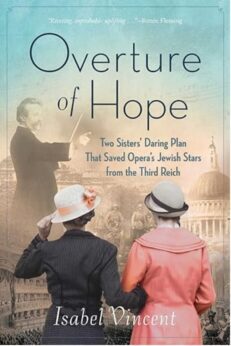
I love to read about ordinary people doing extraordinary things, especially when the stories are true—and I hope you do, too.
In Overture of Hope, two unassuming British sisters show their courage and heroism during World War II, venturing into Nazi territory to rescue Jewish opera stars facing extermination.
Author Isabel Vincent reveals the true story of how in the 1920s, Ida and Louise developed a passion for opera by listening to vinyl records, and she shows where that led them. They loved to attend live opera so much they took brown-bag lunches to work and saved their meager salaries to buy tickets (standing in line for discounts, of course) to operas in London.
Ida, the outgoing younger sister, took the lead in reaching out to visiting opera stars, such as Amelita Galli-Curci. Bold correspondence led to fan relationships with luminaries. By the time Hitler came to power, the sisters had established friendships with several stars and often conversed with them backstage when they came to London.
Among their operatic friends, Austrian conductor Clemens Krauss and his wife, soprano Viorica Ursuleac, became controversial because of their collaboration with Hitler. At the same time, they enlisted the aid of Ida and Louise to help Jewish opera singers escape from Nazi-occupied lands.
Ida’s success as a romance novelist enabled the sisters to travel as opera tourists who often arranged singers’ and families’ escapes, as well as smuggling out the priceless jewelry of the Jewish people they assisted.
Characters:They are shown as the very human individuals they were—even the heroines weren’t perfect.
Ida – years into adult life, she found success as a romance novelist. Later in life, she enjoyed recounting the stories of what she did in the warLouise – quiet, shy, she lived in her younger sister’s shadow the majority of her lifeStrengths:Exciting plot, well-researched
Weakness:Sometimes a bit more repetition of facts than readers need
Content review:Includes accounts of Nazi persecution and acts of cruelty, although not in graphic detail
My Recommendation:If you enjoy a heroic story involving characters from the world of opera, and you’d like to learn more about what happened in the opera world during the war, this is a book for you.
Reader, what works of art, literature, or music have changed your life?
The post When Exceptional Art Meets Everyday People appeared first on C.L.R. Peterson, Author.
September 7, 2023
Into the Heart of Appalachia
As I continue to revise my latest novel for publication, I’ll join three other historical fiction authors in a Zoom discussion, “Women Breaking the Rules: Heroines in Historical Fiction,” on the afternoon of September 17th. I’ll talk about my protagonist, Lucia—how I came to write about her, why she took risks, and more. If you ask in the comment section, I’ll send you information about how to sign up to watch the discussion.
Now, on to this month’s book review:Who could have imagined that a Depression-era project encouraged by Eleanor Roosevelt to promote literacy could find its way into Giver of Stars, by Jojo Moyes, an exciting and moving novel focused on a group of women who deliver library books in rural Kentucky?
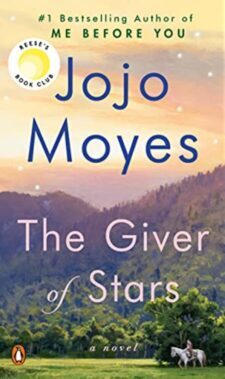 Brief Summary (no spoilers):
Brief Summary (no spoilers):The women of the Pack Horse Library Project of Kentucky not only bring books to an isolated population, but they themselves also benefit from their work, receiving salaries, becoming close friends with their coworkers, and gaining self-confidence and independence unusual for women in their era and place.
As the novel unfolds, even this well-intentioned, successful project finds enemies opposed to a more literate community, which endangers the librarians and creates the central conflict of this story.
Characters:This novel includes so many I can only mention a few, but the author paints each character in a memorable way.
Alice Van Cleve– young English woman, the protagonist, who escapes her culture’s constraints only to struggle with the realities of life as a newlywed in rural KentuckyGeoffrey Van Cleve – owner of local coal mines who dominates the individuals and town within his reachBennett Van Cleve – Alice’s husband, lives under the shadow of his powerful fatherMargery O’Hare – fiercely independent, freethinking head of the Packhorse LibrariansFred Guisler– horse dealer, kind supporter of the Packhorse LibrariansSophia Kenworth– Black woman who assists the librarians with record-keeping and common senseKathleen Bligh – Unassuming backwoods widow and mother of young children, she joins the Packhorse Librarians and aids them in an unexpected wayVerna McCullough – a young woman isolated for years in her family’s home on a remote ridge, she plays a key role in the resolution of the storySven Gustavsson– Fireman in the coal mines, he’s sympathetic to Alice and the Packhorse LibrariansStrengths:A compelling read with complex, interesting characters, and a plot with many twists
Weakness:I’m not in a position to judge this because I’ve read Giver of Stars and not The Book Woman of Troublesome Creek, but questions have been raised about similarities between the two novels. Both deal with the Pack Horse Library Project of Kentucky, and Book Woman came out slightly earlier. If you’ve read both, I’d like to hear from you.
Content Review:This novel contains descriptions of violence; multiple scenes focus on issues related to sexual intimacy, and discerning readers will find hints of the topic of incest.
My Recommendation:If you enjoy deep immersion into an unfamiliar, yet American, culture, and can plow through its rough aspects, Giver of Stars will reward you with vivid, complex characters, and a strong plot. I found this novel both a difficult and yet a satisfying read.
Reader, can you share any knowledge about life in Appalachia?
The post Into the Heart of Appalachia appeared first on C.L.R. Peterson, Author.
August 7, 2023
The Missing Link in a Familiar Story
These dog days of summer (in my hemisphere) are a great time for a rewarding new look at a familiar story.
How did Abraham Lincoln, arguably the greatest U.S. president, make the amazing leap from country boy in rural Kentucky to the White House?
Nancy Horan’s recent historical novel, The House of Lincoln, offers hints as it reveals how Lincoln’s years in Springfield, Illinois, impacted him.
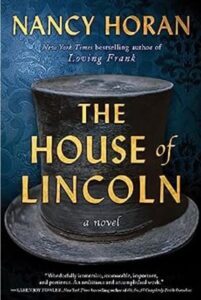 Brief Summary:
Brief Summary:In an entertaining and suspenseful yet historically accurate way, Horan focuses on the complicated background shaping life in the Illinois capital through the stories of three families:
Mary Todd Lincoln (the family she and Abraham created, as well as her family of origin)a Portuguese immigrant family, the Ferreiras, whose daughter, Ana works as a domestic for the Lincolnsa free Black family, the Donnegans, whose members play varied roles in the Underground RailroadThe House of Lincoln begins with Ana’s arrival in 1849 at age 9 as part of a group of 130 Portuguese immigrants from Madeira who escaped after harvesting sugar cane in Trinidad.
The author weaves together the story of the Lincolns and Springfield, Illinois—with its Portuguese immigrants, state government, Underground Railway participants, and slave catchers.
Early in the story, the author gives a clue about the historical (and future) conflict in Springfield, when Mrs. Alsop, a White abolitionist widow whom Ana companions, tells her, “This area was settled early on by New England abolitionists. But it was also settled by Kentucky corn crackers and other uplanders from down South. We may live side by side in this town, but we don’t always understand each other.”
The novel ends in 1909 after a celebration of Lincoln’s 100th birthday.
Characters:Ana Ferreira – protagonist, a sympathetic young Portuguese immigrant who works for the Lincoln family. The story unfolds mostly through her eyes.
Cal (Calli Patterson) – Ana’s childhood best friend; her mixed racial heritage plays a major role in their relationship and the story as a whole
Mary Todd Lincoln – Abraham Lincoln’s wife; the author fairly portrays Mary’s strengths and weaknesses, revealing the background from which the contradictory aspects of her character developed.
Abraham Lincoln – the author shows Lincoln’s roots and humanity as well as the elements of his character that made him great
William Donnegan – adventurous Black cobbler, he conducted escapees from slavery to their next destination in their struggle for freedom
Spencer Donnegan – William’s brother, a barber (to Lincoln and many others) and African Methodist Episcopal preacher in Springfield; he used his talents to write an eloquent address to the people of Illinois, expressing Black demands for the education of Black children, and the repeal of the new Black exclusion laws restricting the settlement of free Blacks in Illinois
Owen Evans – Ana’s husband, he’s a journalist who reports on the Lincoln-Douglas debates. He supports Lincoln and volunteers for the Union Army.
Joao Ferreira – Ana’s younger brother: along with his Portuguese friends, he supports Lincoln and volunteers for the Union Army
Cameo appearances:Frederick Douglass – enslaved and orphaned as a boy, he became a famous Black orator who opposed colonization of Blacks to Africa; in 1866, after the Civil War and Lincoln’s assassination, he speaks in Springfield, arguing for Blacks’ right to vote and warning about the danger that Blacks’ rights (that had only recently been won) would be stripped away.
Stephen Douglas – Lincoln’s opponent in both the campaign for the U.S. Senate from Illinois (in which Douglas defeated Lincoln in 1858) and the presidential race (which Lincoln won in 1860). Douglas didn’t want to offend Southern states by opposing slavery. He declares that only all White men are created equal, while Lincoln insists that Blacks are equal to Whites. His character comes across as weak, especially after Ana hears him tell a lie–that Lincoln would make war on slavery in slaveholding states.
Strengths:The House of Lincoln brings to life the historical figures of Abraham and Mary Lincoln and their sons, Stephen Douglas, and Frederick Douglass, as well as the fictional characters. The novel also helps readers understand the characters’ (and U.S. society’s) underlying motivations and conflicts.
Weakness:I found this novel’s beginning a bit slow, but it lays the groundwork for the story, and the pace picks up.
Content review:The House of Lincoln includes descriptions of some of the violence inflicted on Blacks during this era.
My recommendation:This novel’s plot is somewhat complex, yet entertaining, suspenseful, and historically accurate. If you appreciate a well-spun plot full of twists and turns, rich characters, and desire a deeper understanding of people and events, you’ll enjoy The House of Lincoln.
Reader, which historical novels have given you new insight into a familiar story?
The post The Missing Link in a Familiar Story appeared first on C.L.R. Peterson, Author.
July 8, 2023
Sunny Times under the Sun King?
If you had to choose between obeying your king or risking everything by staying true to your convictions, what would you do?
That’s the agonizing decision Jehan (Jean Pierre) Bondurant must make at the age of 18, after 11 years of captivity in a Dominican priory.
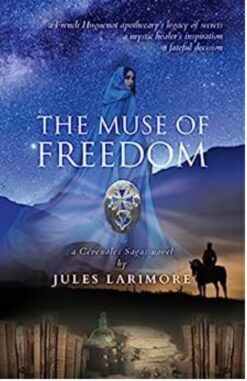
The Muse of Freedom takes place during the reign of France’s King Louis XIV, who spared no effort to rid his kingdom of any threats to his power. Though he was known as the Sun King, his policies were anything but sunny for many of his subjects. His dragonnades (troops) terrorized the Huguenots (French Protestants) whose faith called them to obey God instead of the king, breaking up their families and killing many.
Before writing The Muse of Freedom, author Jules Larimore explored his family’s genealogy. Now he crafts a deeply-researched novel (that he labels as historical fiction) in which his ancestors’ lives and choices play a major role.
Characters:In spite of Larimore’s natural sympathy for his ancestors, his nuanced portrayal of Protestants and Roman Catholics avoids one-dimensional characters.
Jehan (Jean Pierre) Bondurant – conflicted protagonist inspired by the author’s ancestor born in 1677, perhaps a descendant of Jewish refugees persecuted in Aragon who eventually had to convert to Catholicism or flee to avoid further persecution
Amelia – female protagonist who strongly influences Jehan; she’s a sage-femme (wise woman) healer whose life history has brought her to embrace universalist beliefs, rather than either the Roman Catholic or Protestant faith.
Lucrèce – childhood friend of Jehan, she married his cousin André while Jehan lived in the priory; she helps Jehan adapt to life outside the priory
Curé Gellion – parish priest; Jehan’s nemesis who tormented him during and after his years in the priory
Prieur Chabert – Jehan’s tutor during his years in the priory; a more tolerant and sympathetic face of French Catholicism
Children of God – breakaway Protestant group that held clandestine assemblies to evade persecution by French king’s dragoons; they did not always choose pacifism in response to persecution
Strengths:This novel uses beautiful description to show the complex background of the people of Cévenoles, in the Languedoc region of southern France, as well as the conflicting forces tugging at Jehan and his countrymen.
Weakness:The slow pace of plot development demands patience on reader’s part.
Content review:The novel contains numerous references to violence.
The Muse of Freedom will appeal to readers with an interest in the era of France’s Sun King (Louis XIV) who desire a fuller picture of how he obtained and maintained his absolute power, and especially to those ready to challenge themselves with the question, “What would I do if I were in Jehan’s situation?”
Reader, can you recommend other novels whose characters must choose between loyalty to their rulers and their faith?
The post Sunny Times under the Sun King? appeared first on C.L.R. Peterson, Author.
June 7, 2023
How Powerful is an Ordinary Person?
How could a tobacco-chewing, defiant, small Polish peasant woman thwart the Nazis’ attempt to exterminate the Jews?
As summer begins in the northern hemisphere, I hope you’ll have opportunities to get away from normal routines, relax and read—perhaps J.L. Witterick’s My Mother’s Secret.
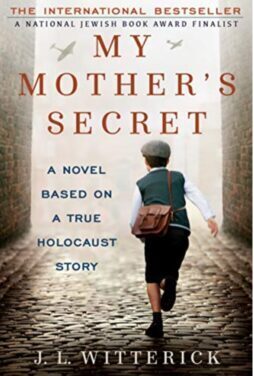 This short historical novel is based on the lives of Franciszka and Helena, a Polish mother and daughter recognized as “the Righteous among the Nations” in Israel.In the midst of the German occupation of Poland in World War II, they risked everything to save the lives of people they barely knew.The author weaves the stories of these desperate people with the lives of Franciszka and Helena, crafting a suspense-filled plot that keeps readers turning the pages.Characters:Helena – narrator, protagonist, and daughter of Franciszka. Her mother and brother shape her character, but she must make difficult choices on her own.Franciszka – Helena’s mother, the heroine of the story, hides two Jewish families and a German soldier. She says “If you choose to do the right thing, it’s a conscious decision at first…Your actions with time become your character.” Her life exemplifies her words, and readers will root for her.Bronek – Jewish carpenter who appeals for help for somewhere to hide his family from the NazisMikolaj – son of prominent Jewish doctor whose family also needs a place to hide from the NazisVilheim – young German vegetarian who values every living being. After being drafted into the German Army, he’s disgusted by the Nazis’ actions and deserts. If caught, he will face death by firing squad. Strengths:
This short historical novel is based on the lives of Franciszka and Helena, a Polish mother and daughter recognized as “the Righteous among the Nations” in Israel.In the midst of the German occupation of Poland in World War II, they risked everything to save the lives of people they barely knew.The author weaves the stories of these desperate people with the lives of Franciszka and Helena, crafting a suspense-filled plot that keeps readers turning the pages.Characters:Helena – narrator, protagonist, and daughter of Franciszka. Her mother and brother shape her character, but she must make difficult choices on her own.Franciszka – Helena’s mother, the heroine of the story, hides two Jewish families and a German soldier. She says “If you choose to do the right thing, it’s a conscious decision at first…Your actions with time become your character.” Her life exemplifies her words, and readers will root for her.Bronek – Jewish carpenter who appeals for help for somewhere to hide his family from the NazisMikolaj – son of prominent Jewish doctor whose family also needs a place to hide from the NazisVilheim – young German vegetarian who values every living being. After being drafted into the German Army, he’s disgusted by the Nazis’ actions and deserts. If caught, he will face death by firing squad. Strengths:This story cuts to the core of every character and reveals how each one responds to danger and moral dilemmas.
Weakness:Heroic characters seem almost too good to be true.
Content review:Contains references to violence that occurs offstage.
My recommendation:According to publishing industry veteran, Howard Wells, My Mother’s Secret is “authentic and reads like poetry.” From my perspective, this novel is a quick read that was hard to put down, with characters, events, and themes that challenged me to reflect on what I would do in similar circumstances. I hope you’ll consider it as a worthy addition to your reading list.
Reader, can you recommend a story of heroism to inspire other readers?
The post How Powerful is an Ordinary Person? appeared first on C.L.R. Peterson, Author.
May 7, 2023
When Librarians Were Spies
If you know any librarians, can you imagine them as heroic spies?
Neither can I, so Madeline Martin’s recent novel, The Librarian Spy, sparked my curiosity.
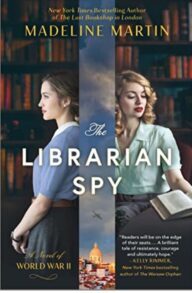
I discovered a spy-filled World War II story set in Lyon, France, and an intriguing, new-to-me location—Lisbon, Portugal.
Here’s the plot in a nutshell:The Allied Special Libraries and Information Bureau in Lisbon brought in research librarians from the U.S. and U.K to track down facts about clear or possible Nazi plans and activities, which helped shorten the war.At the same time, German spies in Lisbon sought information about Allied plans.Into this mix arrived a constant flow of refugees (especially Jewish) seeking safe refuge from parts of Europe under threat or occupation by the Nazis.In occupied Lyon, France, under threat of torture or immediate execution, the Resistance continues to work actively against the Nazis, printing and distributing truthful news about the progress of the war and the Nazis’ crimes.The stories begun in these two locales converge at a certain point in the story (sorry, no spoiler here!)Characters:Each must make heart-wrenching choices with potentially fatal consequences:
which risks to takewhom to trustwhom to helpMost are heroic, so readers will root for many, among them:
Ava Harper – 1st protagonist, she’s a Rare Book librarian recruited from the Library of Congress to aid the U.S. intelligence effort in PortugalJames MacKinnon – Brit in Lisbon who takes an interest in Ava, who thinks he works for the Special Libraries and Information Bureau Elaine Rousseau (alias of Hélène Bélanger) – 2nd protagonist; she’s a resident of Lyon, France, who sympathizes with the Resistance, but her husband, Joseph, forbids her from volunteering and scolds her for not being a proper Vichy wifeEtienne – Joseph’s best friend, he connects Elaine with the ResistanceJosette, Nicole, Denise, and Manon – all Resistance sympathizers in Lyon who interact with ElaineSarah – Jewish refugee desperate to escape with her young son, Noah, to join her husband in the U.S.Kommander Werner – cruel German known for torturing Resistance captives in Lyon so they would reveal names of their fellow anti-Nazi sympathizersStrengths:This suspenseful story keeps readers on the edge of their seats, while weaving in setting details and interesting information that’s not widely known about Portugal and Lyon in World War II.
Weakness:Although this is a compelling story, a major premise is fictional. This may disappoint readers seeking a completely historically-accurate novel. The author admits that the U.S. sent no women librarians to Portugal during World War II to uncover potentially useful information.
Content review:Descriptions of violence committed by the Nazis will make this story disturbing for some, especially young readers.
I recommend The Librarian Spy, an entertaining and informative dual-protagonist novel, to readers who enjoy suspenseful reading about the World War II era, with a fresh twist.
Reader, what are your favorite novels of World War II?
The post When Librarians Were Spies appeared first on C.L.R. Peterson, Author.
April 6, 2023
Have You Discovered This Italian Masterpiece?
This month we focus on The Betrothed, an Italian literary masterpiece Italians revere, but most Americans have never heard of.
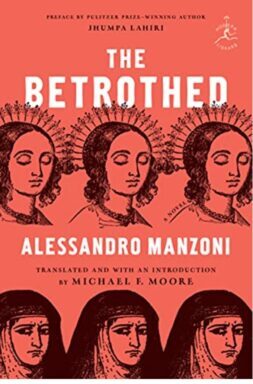
Why read this nearly two centuries-old novel about a young couple, priest, and a local strongman set in 1628 in Italy’s Lake Como region?
The Betrothed (I promessi sposi) offers a deep, yet entertaining, portrayal of life in the Lombardy region in the 1600s.In Italy, this historical novel is considered the nation’s literary masterpiece, penned by Alessandro Manzoni, famed as a poet and philosopher, as well as a novelist.Thanks to a new English translation, the first in 50 years, the novel is now a much smoother read for English readers.What’s the story?Lucia and Renzo, an endearing peasant couple anticipate their wedding the following day. Disaster strikes when a local baron who wants Lucia for himself uses his power to prevent their marriage.The remainder of the novel (a years-long saga!) reveals the extensive fallout of that single evil deed, as well as the beneficial repercussions of some characters’ positive choices.Although The Betrothed has high as well as low moments, the author spares no effort to detail the suffering and powerlessness of innocent, low-born people. He raises questions:
How can God, the Church, and the justice system allow this?How do people cope with all these crises? Heavy-handed military domination of their region (by Spain), followed by German invasionCorrupt justice system allowing virtual free reign of petty strongmen and criminal gangsChurch officials (with notable exceptions) who often turned a blind eye to injustice and oppression of common peopleFaminePlague (perhaps brought by soldiers) in Milan and surrounding areas in 1630Characters:This novel has many characters, but it follows the lives of several key individuals, revealing how each one responds to these hardships:
Renzo – a hard-working young man who has saved his earnings in preparation for marriage to Lucia; he endures many undeserved perils Lucia – Renzo’s fiancée, a simple, pious peasant whose circumstances force her to choose between terrible optionsDon Rodrigo – main villain, a local baron/strongman who wants Lucia for himself and will stop at nothing to have herDon Abbondio – the parish priest who cowers under threats from henchmen of Don Rodrigo; he refuses to marry Renzo and LuciaPadre Cristoforo – Capuchin friar rescued from a death sentence; he responds by showing mercy to peasantsFederico Borromeo, Archbishop of Milan – wise, compassionate cardinalAgnese – Lucia’s well-meaning mother, she schemes to trick the priest into marrying Lucia to RenzoThe Unnamed – greatest robber baron, his change of heart transforms the lives of manyThe Nun of Monza – an unfortunate woman sentenced by her family to life in a convent, she plays a key role in the storyStrengths:The plot is fascinating, with many entertaining twists, and it plunges the reader into the culture and events of the era.
Weakness:This novel is very long, and modern readers may wish to skim through the many pages of historical background.
Content review:This novel contains violence and suggestions but no explicit descriptions of physical intimacy.
I recommend this novel to intellectually curious readers ready for an immersion into the culture of 17th-century Lombardy, especially if they plan to travel to the regions near Lake Como and Milan.
Reader, what’s your favorite novel set in Italy?
The post Have You Discovered This Italian Masterpiece? appeared first on C.L.R. Peterson, Author.



